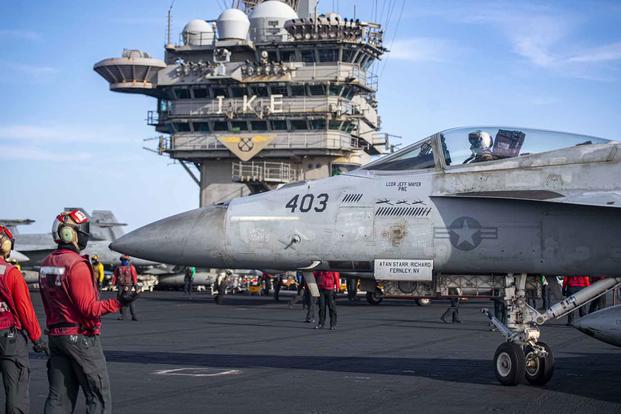


Barran Press
The Pentagon acknowledged on Tuesday, June 25, 2024, that the departure of the USS Dwight D. Eisenhower aircraft carrier from the Red Sea has created a "gap" amidst escalating attacks by the Houthi rebels, but assured that U.S. forces remain capable of responding.
"We still have capability in the region," said Major General Pat Ryder, the Pentagon's press secretary, in a statement to reporters, according to the military news website Military.com.
Ryder added that the Navy will continue to work closely with international allies and partners "to achieve that end when it comes to protecting the flow of commerce and the safety of mariners in the Red Sea."
On Saturday, June 22, Ryder announced that the USS Dwight D. Eisenhower carrier strike group had left the region where the Houthis have been attacking commercial vessels for months.
He stated that Eisenhower had sailed to the Mediterranean Sea and that the USS Theodore Roosevelt carrier strike group would take its place in the region.
Regarding the arrival date of the Roosevelt carrier in the Red Sea, Military.com quoted the Pentagon spokesman as saying that the Roosevelt, currently deployed in the Pacific, will not begin its westward journey until next week after completing training. This leaves the Navy's presence in the Red Sea at low levels – only destroyers – until its arrival.
The website noted that this gap "comes at a time when Houthi attacks have become increasingly effective."
It stated that in recent weeks, the Houthis have successfully used a drone to strike a commercial vessel, forcing the U.S. Navy to evacuate the crew. The ship subsequently sank, and "one of the commercial mariners from the crew was lost amidst the attacks."
The website also reported that the Houthi group, designated as a terrorist organization, struck another cargo ship with two separate missile attacks, causing fires and seriously injuring one crew member. The crew abandoned the ship after losing control of the fires and was rescued by another commercial vessel.
The website highlighted the expectations of maritime professionals that the attacks will not only increase the cost of shipping goods through the Red Sea but also lead to a sharp decline in the volume of commercial traffic in the region.
Earlier in June, a report by the Defense Intelligence Agency described Houthi attacks as having "detrimental effects" on at least 65 countries and 29 major energy and shipping companies.
The report also stated that the attacks "have put ship crews at risk, damaged regional security, and hindered international humanitarian relief efforts," in addition to threatening freedom of navigation and increasing the cost and transit times for commercial shipping.
The report noted that with the Eisenhower destroyer and its three-ship strike group now in the Mediterranean Sea, the Navy's presence in the Red Sea is currently limited to two destroyers, the USS Laboon and the USS Cole.
Ryder stated that the U.S. Navy also has destroyers deployed in the European theater, noting that they have "been very active in providing those types of defenses, in addition to other capabilities that include aircraft and surveillance and reconnaissance capabilities."
Since last November, the Houthi group has been launching missile and drone attacks on commercial cargo ships in the Red Sea, leading to increased maritime insurance costs and prompting many shipping companies to opt for the much longer route around the southern tip of Africa.
In December 2023, the United States, Israel's main ally, formed a multinational coalition to protect maritime traffic from attacks by the group designated as a terrorist organization. Meanwhile, U.S. forces have been carrying out strikes against Houthi military targets from time to time.